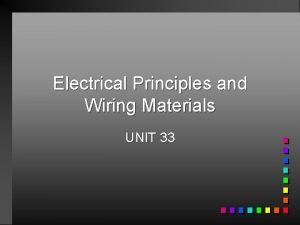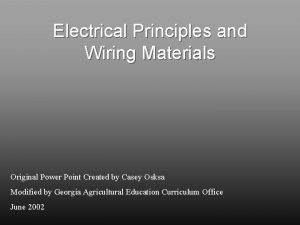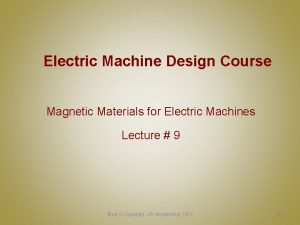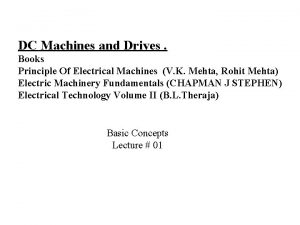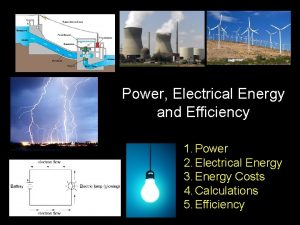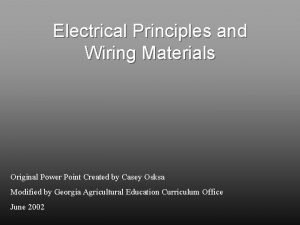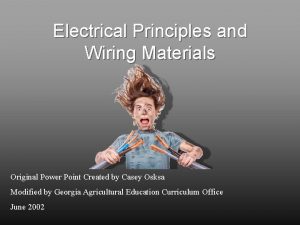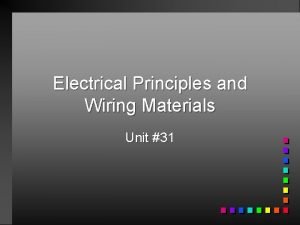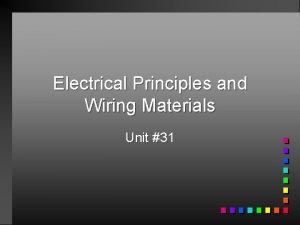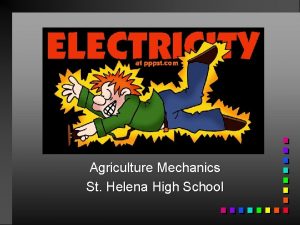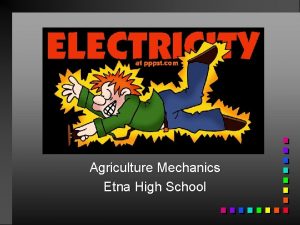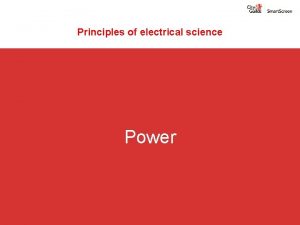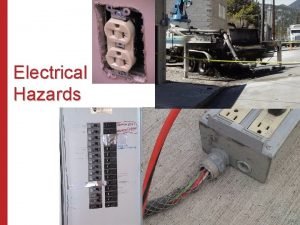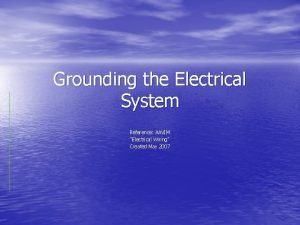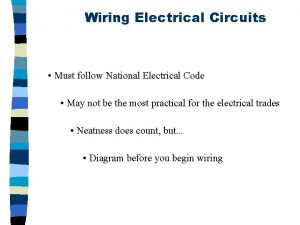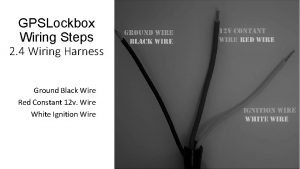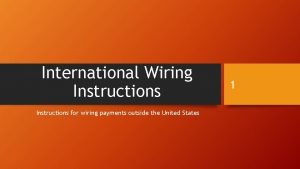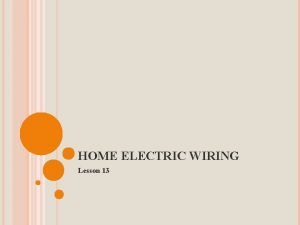Electrical Principles and Wiring Materials Original Power Point

















- Slides: 17

Electrical Principles and Wiring Materials Original Power Point Created by Casey Osksa Modified by Georgia Agricultural Education Curriculum Office June 2002

Principles of Electricity is a form of energy that can produce light, heat, magnetism, chemical changes n Resistance: tendency of a material to prevent electrical flow n Conductor: if electricity flows easily n Insulator: material that provides great resistance n

Amps, Volts, Watts Amperes: measure of the rate of flow of electricity in a conductor n Volts: measure of electrical pressure n Watts: measure of the amount of energy or work that can be done n Ohms: measure of electrical resistance to flow n

Ohm’s Law Ohm = R n Volts = E n Amps = I n Ohm’s Law: E = IR n I=E/R R=E/I

Electrical Safety Shock and Fire n Never disconnect any safety device n Don’t touch electrical items with wet hands or feet n Don’t remove ground plug prong n Use GFI in wet areas n Discontinue use of extension cord that feels warm n Don’t put extension cords under carpet n

Electrical Safety Install wiring according to NEC n Blown fuse or breaker, determine cause n Don’t replace fuse with larger fuse n Don’t leave heat producing appliances unattended n Heaters & lamps away from combustibles n Don’t remove back of TV (30, 000 v when off) n Electric motors lubricated, free of grease etc. n

Electrical Safety Keep appliances dry n Don’t use damaged switches, outlets, fixtures, extension cords n Follow manufacturer’s instructions for installation and use of electrical equipment n

Service Entrance Power from power company n Transformer: drops volts from 25, 000 volts to 240 volts n Service drop: wires etc from transformer to house n Entrance head: weather-proof at house n Meter: $$$ n Service Entrance Panel (SEP): box with fuses or breakers n

Electric Meter Kilowatthours: how electricity is sold n Kilo = 1000 n Watthour = use of 1 watt for one hour n n 100 watt light bulb for 1 hour - 100 watthours n Kilowatthour = 1000 watts for one hour

Branch Circuits usually begin at SEP n branch out into a variety of places n only 1 motor or; n series of outlets or; n series of lights n use correct size wire and fuse or breaker n

Types of Cable Nonmetallic sheathed cable: copper or alluminum wire covered with paper, rubber, or vinyl for insulation n Armored cable: flexible metal sheath with individual wires inside. Wires are insulated n Conduit: tubing with individually insulated wires n

Wire Type and Size copper n No 14 (14 gauge) = 15 amp circuits n No 12 = 20 amps n No 10 = 30 amps n aluminum use one size larger n lower gauge number = larger wire n No 8 and larger use bundles of wires n current travels on outer surface of wire, so a bundle of smaller wires can carry more n

Voltage Drop loss of voltage as it travels along a wire n lights dim, motors overheat n larger wires have less voltage drop for a given amount of current n longer wire = greater problem n must increase wire size as distance increases n

Wire Identification Type of outer covering, individual wire covering, cable construction, number of wires n Wire type stamped on outer surface n

Wire Types Type T - dry locations n Type TW - dry or wet n THHN - dry, high temps n THW and THWN - wet, high temps n XHHW - high moisture & heat resistance n UF - direct burial in soil but not concrete n

Wire Identification Color coded: black, red, & blue = positive or hot wires which carry current to appliances n White = neutral wires carry current from appliance back to source n Green or Bare = ground all metal boxes and appliances n

Wire Identification Wire Size: 12 -2 has two strands of No. 12 wire (black & white) n 12 -2 w/g same, with one green or bare n 12 -3 has three strands of No. 12 (black, red, white) n 12 -3 w/g same, with green or bare n
 Principles of wires
Principles of wires Unit 33 electrical principles and wiring materials
Unit 33 electrical principles and wiring materials Wiring
Wiring Electrical wiring estimation and costing
Electrical wiring estimation and costing Materials needed in making
Materials needed in making Real power formula
Real power formula Informsu
Informsu Point point power
Point point power Cant stop the feeling go noodle
Cant stop the feeling go noodle Recognizing useful and harmful materials
Recognizing useful and harmful materials Man made materials
Man made materials Differentiate adopting materials and adapting materials
Differentiate adopting materials and adapting materials Magnetic materials used in electrical machines
Magnetic materials used in electrical machines Principles and applications of electrical engineering
Principles and applications of electrical engineering Principles and applications of electrical engineering
Principles and applications of electrical engineering Direct materials budget with multiple materials
Direct materials budget with multiple materials Principles of electrical machines vk mehta
Principles of electrical machines vk mehta How to calculate electrical power
How to calculate electrical power
